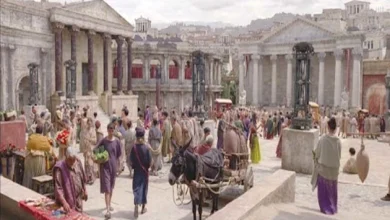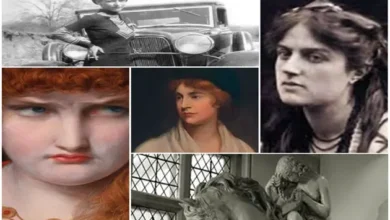Herod the Great and the curse of the Holy Land
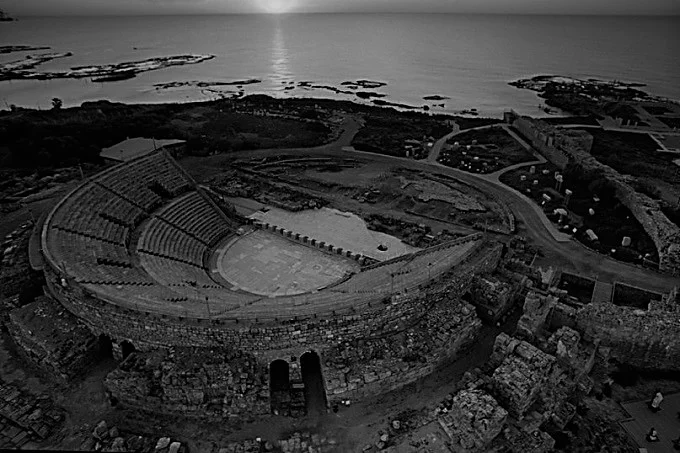
According to biblical tradition, Herod was infanticide and a ruthless despot. But sensational new findings by archaeologists tell a different story: the king of Judea was a talented builder, one of the most prominent rulers of antiquity.
Thirteen kilometers south of Jerusalem, whereby the last stunted olive groves and stony fields the Judean Desert begins, there is a hill with steep slopes and a cut top that makes it look like a small volcano. This is Herodium, one of the outstanding architectural creations of antiquity, created by Herod the Great, king of Judea.
Herod, a wise and generous king, a brilliant general, and one of the most vigorous and brilliant builders of the ancient world, brought his country to prosperity and power. He transformed an ordinary rocky hillside into a majestic structure of white stone and surrounded it with palaces, ponds, and hanging gardens. But in the memory of generations, he has remained as the insidious and cruel ruler from Matthew’s Gospel – the villain who ordered the extermination of all male children in Bethlehem in an unsuccessful attempt to destroy the newborn Jesus so that the prophecy that Jesus would become King of the Jews would not come true.
In the Middle Ages, Herod became, so to speak, a prototype of the Antichrist. In the illustrations of manuscripts and in the sculptural groups of Gothic cathedrals, he was depicted among the gargoyles, tearing his beard in a fury and swinging his sword at children to the insidious whispers of Satan. But we can be almost certain that Herod was not guilty of this crime, which is not recorded in any source except the Gospel of Matthew.
However, he did kill people, including his own relatives and children; his victims included his three sons, his wife, and many of his retainers. Herod was a contradictory and complicated character, which is not easy to understand even today: he combined brilliance and cruelty, valued artistic harmony and wreaked havoc.
The discovery of Herod’s tomb in 2007 has provided a better understanding of one of the most enigmatic characters of antiquity, confirming that his contemporaries worshipped Herod as well as hated him.
For the past half-century, the Israeli archaeologist Ehud Netzer has tried to imagine the true Herod, whose identity is imprinted in stone. He has excavated, studied the palaces, the fortresses the king defended, the regions he loved to visit. The Herodium is the only structure among the many marvelous structures erected by Herod the Great that bears his name. Herod may have loved it more than any other of his other creations. Here he was laid to rest in a magnificent mausoleum at the end of his earthly journey of daring deeds and bloody deeds.
The location of the tomb remained a mystery for nearly two millennia, but in April 2007, Netzer and his colleagues at Hebrew University discovered it at the top of the Herodium slope. The discovery provided a better understanding of one of the most enigmatic characters of antiquity, confirming that his contemporaries worshipped Herod and hated him.
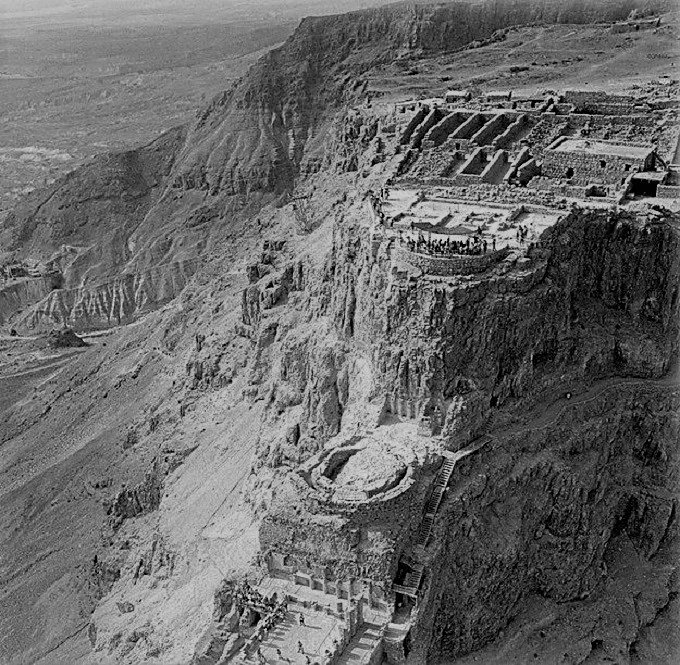
Political passions flared up around the find: the Palestinians began to talk about the right to the artifacts, and Jewish settlers declared that the construction of the tomb on this site confirms the justice of their claim to the West Bank. Netzer, after decades of working in places associated with Herod’s name, accustomed to disturbances in the form of wars, invasions, and rebellions, was not surprised. In the Holy Land, archaeology can be as important politically as any higher power, however royal.
Herod was born in 73 BC and grew up in Judea, a state in the center of ancient Palestine, torn by civil war and sandwiched between powerful adversaries. The Hasmonean dynasty, which had ruled Judea for seventy years, was split by a bitter rivalry for the throne between two brothers, Hyrcanus II and Aristobulus II. The kingdom was involved in a major geopolitical struggle between the Romans, who were approaching from the north and west, and the Parthians, Rome’s old enemies, who had become active in the east. Herod’s father, an advisor to Hyrcanus and a gifted military leader, chose the Romans as his allies, who drove out Aristobulus and enthroned Hyrcanus.
From an early age, Herod saw the benefits of an alliance with the Roman Empire-though the pro-Roman policy was then seen as a betrayal of the Jewish people. Throughout his reign, Herod strove to reconcile the interests of Rome and those of his subjects who zealously defended their political and religious independence. This precarious balance was particularly difficult for him to maintain: Herod’s mother was an Arab and his father a Jew (from a people south of Palestine). To get the latest stories, install our app here.
Although the future king was raised in the Jewish faith, he did not have a social status adequate to the powerful old families of Jerusalem, whose representatives had the right to hold the office of the high priest (kings of the Hasmonean dynasty were traditionally high priests as well). Many subjects considered Herod an outsider, a half-breed, as his early biographer Josephus Flavius wrote, and continued to fight for the restoration of the Hasmonean theocracy.
In 43 BC. Herod’s father was poisoned by an assassin sent by the Hasmoneans. Three years later, when the Parthians invaded Judea, Aristobulus’ supporters joined their attackers, overthrew and mutilated Hyrcanus, and prepared to deal with Herod.
In rebuilding the Second Temple, Herod placed colossal blocks of stone in the foundation, some weighing 600 tons. The surviving part of the structure, the Wailing Wall, remains one of the main Jewish shrines.
It was at this critical moment that Herod turned to the Romans for help. Under cover of night, he fled from Jerusalem with all his family to Masada, where he left his loved ones. Later, after defeating the Parthians in a desperate battle on the spot where Herodium was later built, he set out for Rome.
The Senate, mindful of his abiding loyalty to the empire, declared Herod king of Judea. From the senate building, he walked hand in hand with two of Rome’s most powerful men: Marcus Antonius, the general and orator who ruled the eastern part of the Roman dominions, and Octavian, the young patrician who ruled in the west. (Nine years later Octavian would defeat Antony and unify the empire under his rule, taking the title of Augustus.) Then came the event that was the first in a series of many compromises that Herod had to make in order to retain power: he led a procession to the Capitol, the temple of Jupiter, the main sanctuary of Rome, where he offered sacrifice to the pagan gods.

Herod was now king, but he had yet to win back his kingdom. The bloody war lasted three years. Finally in 37 BC. Herod took Jerusalem and took full possession of Judea – at least politically. To consolidate his social and religious reputation, he divorced his first wife Doris and married Mariamne of the Hasmoneans. But the Hasmoneans were no less of a threat even after this marriage.
Two years later, during the Passover celebrations, crowds of believers gave a rapturous welcome to Mariamne’s young brother, the high priest of the Second Temple. Fearing that this young man might be a pretender to the throne, Herod ordered him drowned in the pool of his palace in Jericho.
But it was not only the Hasmoneans who troubled Herod. From 42 BC to 31 BC, when Mark Antony ruled the eastern Roman Empire, Herod remained his devoted friend and ally, despite the intrigues of Antony’s wife at the time, the beautiful Egyptian Queen Cleopatra, who begged her love-obsessed husband to cut off the tidbits from Judea and annex them to Egypt. She also tried to seduce Herod herself, who stubbornly rejected the charms of the Egyptian enchantress. In 31 BC, after the battle of Actium, the situation changed radically. Having defeated the armies of Antony and Cleopatra, Octavian became the first Roman emperor.
Herod came to Augustus without a crown. Realizing that the new ruler would remind him of his long friendship with Antony, Herod hurried to the island of Rhodes, where the emperor was then stationed, but held himself with royal dignity. Instead of trying to diminish his loyalty to Antony, he emphasized it by promising to serve his new overlord with the same zeal. Herod’s sincerity and composure impressed Octavian so much that he confirmed him as king of Judea, later adding new territories to his holdings. Augustus stressed that for a man of such greatness of spirit as Herod, a kingdom as small as Judea was too small.
Over the next two decades of prosperity and relatively peaceful life, Herod transformed his court into a center of Hellenistic and Roman culture, gathering prominent scholars, poets, artists, and architects from East and West. In days of famine and natural disasters, he generously helped his subjects, including those outside Judea, in Greece and Asia Minor. (The citizens of Olympia were so grateful for Herod’s donations that they elected him Agonotet – steward of the Olympic Games.) In addition to politics, Herod was involved in building structures of astonishing scale and skill as an architect. There were no deep-water harbors on the northern coast of Judea, and he built one himself at Caesarea.
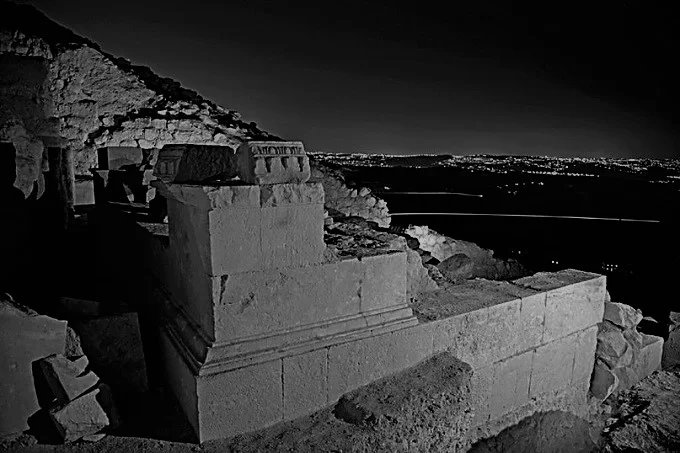
Innovative building techniques were used to construct a cyclopean breakwater of huge blocks of hydraulic concrete. Herod’s northern palace at Masada spread out on three narrow terraces cascading down a dizzyingly steep slope, so that the residence was filled with light and air but at the same time impregnable.
In rebuilding the Second Temple, Herod placed enormous blocks of stone in the foundation, some weighing 600 tons. The surviving part of the structure, the Wailing Wall, remains one of the main Jewish holy sites. On the same foundations stands the Dome of the Rock mosque, the third most important Muslim holy place.
Behind the outward splendor and prosperity of Judea under Herod was an increasing discord in his personal life. Like many other Hellenistic rulers, Herod had a large and troubled family: ten wives and more than a dozen children whose constant intrigues and plots exacerbated the darker sides of his nature.
In 29 BC, during a fit of violent jealousy skillfully provoked by his sister Salome, Herod had his beloved wife, Mariamne, executed. For months after the execution, he was in a deep depression, calling out Mariamne’s name again and again, as if to summon her spirit from beyond the grave.
A few years later, Herod had his three sons put to death on charges of conspiracy to seize power, and he rewrote his will six times. During his last illness, Herod contrived a scenario of national mourning for himself. The soldiers were ordered to arrest a group of the most respected citizens of Judea and hold them at the hippodrome in Jericho, so that after the king’s death, they would be put to death. (Fortunately for the arrested, Herod’s order was not carried out.)
Herod’s final illness was, like his whole life, totally unbelievable according to Josephus Flavius, who lists its symptoms with poorly concealed gloating: inner pain and burning sensations, swollen feet, cramps, insatiable hunger, ulceration of the colon, putrefaction of the genitals, where worms supposedly got into them, and difficulty in breathing.
Many generations of scholars have racked their brains trying to figure out what disease Herod suffered from: syphilis, diabetes, which led to cirrhosis of the liver, and chronic kidney disease complicated by Fournier’s gangrene have been named. King Herod, however, seems to have suffered most, not from illness, but from the hostility of his biographer. The symptoms enumerated by Flavius were a common set of ailments considered a sign of God’s wrath, and for centuries were attributed by Greek and Roman historians to bad rulers.
The funeral of the king was grandiose. The same Flavius sees them as evidence of the respect and even reverence with which the subjects treated their lord. At Jericho, where the king died in the fourth year BC, his body was placed on a golden stretcher, studded with precious stones and draped with royal purple, a scepter was placed in his right hand, and a golden crown was placed on his head.
Around the stretcher gathered the whole of Herod’s numerous family, the army in full battle garb, and five hundred servants and freedmen with spices in their hands. Together they saw the king off for his last journey, the long forty kilometers under the scorching sun to the southwest, to a snow-white stone hill at the edge of the desert. There he was laid to rest.
Herod had a profound understanding of architecture and urban planning principles and took an active part in the design.
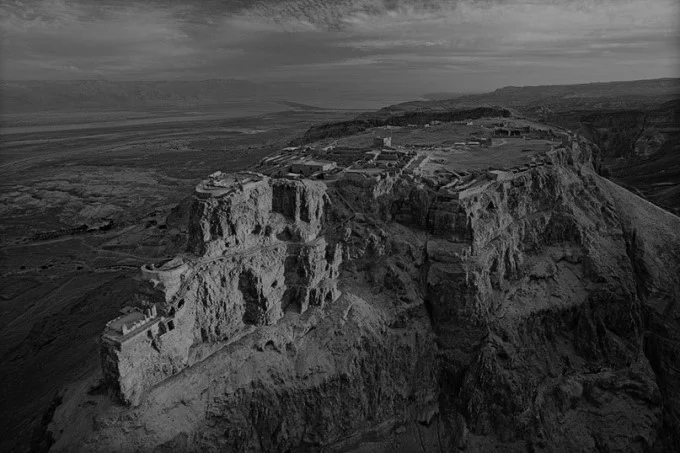
An archaeologist became interested in Herod in 1963 when he served as an architectural expert on an archaeological expedition that conducted the crucial excavations of Masada, the fortified residence that the king of Judea had erected atop the table mountain above the Dead Sea.
In 1967, as a result of the Six-Day War, Israel occupied the West Bank, and a number of sites related to Herod’s activities became accessible to Israeli archaeologists. Netzer worked first at two of the most interesting of these, Jericho and Herodium, and later at several others. “I discovered so many unique but similar architectural compositions and solutions that I came to the conclusion: they all belonged to the same person. Herod deeply understood architecture and the principles of urban planning, and took an active part in the design.”
The Herodium consists of two parts: the Lower Herodium is located at the foot of the hill and at the beginning of the slope (at one time it was the largest villa of the ancient world), and the Upper is a majestic fortress palace erected on top; its massive five-story East Tower lies in ruins, but it is not difficult to imagine how it stood out on the horizon. To get the latest stories, install our app here.
The Herodium is a complex site: it sits on a steep slope, has several levels, and includes many structures. Nearby, Netzer talked about the excavation of the Great Pool, which they began digging in 1972 – a rectangular brick bowl surrounded by an elegant white stone colonnade.
Over time, it became clear: it was once a swimming pool the size of almost a soccer field. As the years passed, Netzer gradually pieced together the pieces of the Herodium puzzle, putting forward and rejecting versions of what these or those objects were for, until he managed to find a perfect place for them in the overall picture of the complex.
At the bottom of the Herodium, there is a flat terrace carved into the slope, about thirty meters wide and three hundred and sixty-five meters long. At first, one may think it was a racetrack, but Netzer explains, “but then we decided that it was too narrow for the turning of chariots; most likely it was used for parades, and here Herod’s troops were assembled during the funeral ceremony.”
The condition of the fragments confirms that Herod continued to be hated even after his death. The traces of hammering show that the sarcophagi were deliberately destroyed. The one made of pink limestone was particularly brutal, being broken into hundreds of pieces. This apparently occurred some 70 years after Herod’s death, when Jewish rebels were taking over Herodium in two rapid and defeated rebellions against Roman rule, called the First and Second Jewish Wars. “To them, Herod was a collaborator”. “He betrayed the faith and the political independence of the Jews,” Netzer explained. “It wasn’t just the lust for profit that drove them. It was revenge.”
After Herod’s death, times were not good for Judea. His heirs had squandered vast riches and destroyed religious and political harmony. To get the latest stories, install our app here.
For two weeks, archaeologists and his team kept the discovery a secret. “I wanted to check all the facts before making the announcement: I knew that the tomb would attract enormous interest.” And Netzer turned out to be right. The May 8, 2007 press conference had political implications.
The head of the Jewish settlement of Gash Etzion, south of Jerusalem, told an Israeli military radio station that the archaeologists’ find was “new evidence of the connection between Gush Etzion, the Jewish people, and Jerusalem,” and called for the tomb to be declared a national and religious monument.

